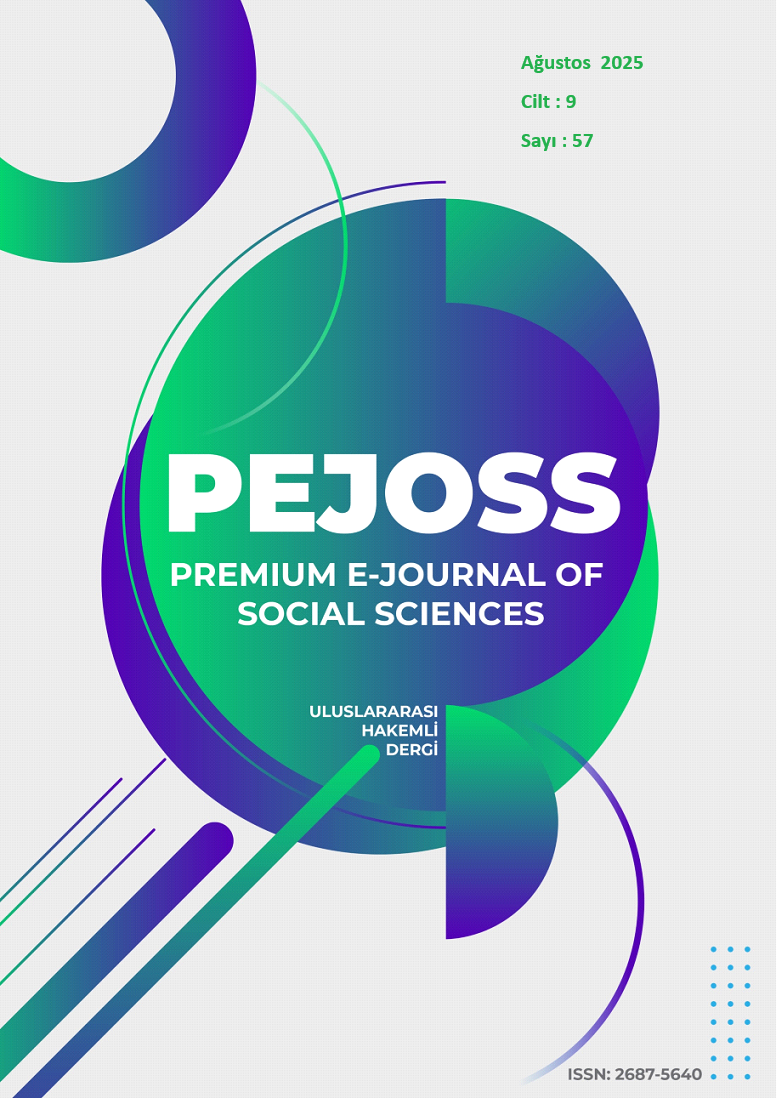The Feminization of Migration: Various Reasons for Women's Migration
DOI:
https://doi.org/10.5281/zenodo.17014165Keywords:
Migration phenomenon, women’s migration, reasons for migrationAbstract
In the modern world, the problem of migration, especially the migration of women, is among the important issues addressed by many disciplines. It is known that migration is as old as human history. Migration is a social movement that has continued from the first moment of human existence to the present day. It is known that the first migrations were made mainly for the purpose of survival and survival. But today, people tend to migrate for many reasons such as economic, political, education or a better living condition. It is known that the proportion of women in the immigrant population has increased in recent years. Therefore, in this study, the phenomenon of migration, the migration of women and the social causes of these migrations were examined theoretically.
Downloads
References
Coşkun, E. (2017). Türkiye’de Kağıtsız Göçmen Kadınlar ve Sosyal Hizmetler. Çalışma ve Toplum. 3(54), 1299-1316.
Buz, S. (2007). Göçte Kadınlar: Feminist Yaklaşım Çerçevesinde Bir Çalışma. Toplum ve Sosyal Hizmet, 18 (2), 37-50.
Dedeoğlu, S., & Ekiz G., Ç. (2020). Göç Teorileri, Göçmen Emeği ve Entegrasyon: Kadınların Yeri. İçinde K. Danış (Ed.), Toplumsal Cinsiyet Perspektifinden Türkiye’de Göç Araştırmaları. İstanbul: Sabancı Üniversitesi Toplumsal Cinsiyet ve Kadın Çalışmaları Mükemmeliyet Merkezi (SU Gender) ve Göç Araştırmaları Derneği (GAR). 18-37.
Ekici, S. ve Tuncel, G. (2015). Göç ve İnsan. Birey ve Toplum Dergisi, 5(9). 9-22.
Güvenç, B. (1996). Göç Olgusu ve Türk Toplumu. Ulusal Sosyoloji Kongresi: Toplum ve Göç. Sosyoloji Derneği Yayınları.
International Organization For Migration, IOM. (2009). Göç Terimleri Sözlüğü. Edt. Bülent Çiçekli. Cenevre: Uluslararası Göç Örgütü.
Kara, P., & Nazik, E. (2018). Göçün Kadın ve Çocuk Sağlığına Etkisi. Gümüşhane Üniversitesi Sağlık Bilimleri Dergisi, 7 (2), 58-69.
Kaypak, Ş. (2017). Göçün Kadınlaşması: Göç Olgusuna Toplumsal Cinsiyet Perspektifinden Bakmak. A. Yatkın (Ed.), Uluslararası 11. Kamu Yönetimi Sempozyumu İçinde (S. 1585-1604). Fırat Üniversitesi.
Koçak, Y., & Terzi, E. (2012). Türkiye’de Göç Olgusu, Göç Edenlerin Kentlere Olan Etkileri ve Çözüm Önerileri, Kaü-İibf Dergisi, 3(3), 164. 163-184.
Kurtuldu K., & Şahin E. (2018). Göçün kadın yaşamı ve sağlığı üzerine etkileri. Ordu University Journal of Nursing Studies, 1(1), 37-46.
Naz, Y. (2015). Türkiye’nin Uluslararası Göç Politikası ve Uluslararası Göçün Türkiye’deki Güncel Sorunları, Süleyman Demirel Üniversitesi Yüksek Lisans Tezi.
Özgöker U. Doğan G. (2019). Uluslararası Göç ve Mülteci Krizi, Der Yayınları.
Ravenstein, E. G. (1885). The Laws Of Migration. Journal Of Statistical Society Of London, 2(48), 167-209.
Sirkeci, İ. (2020). Göç Meselesi. Pasajlar Dergisi, 11-34.
Süt, H. K. (2017). Suriye'den Göç Eden Kadınlar ve Üreme Sağlığı Sorunları. Sağlık ve Toplum, 27(1), 3-7.
Topçu, S., & Beşer, A. (2006). Göç ve Sağlık. Cumhuriyet Üniversitesi Hemşirelik Yüksekokulu Dergisi, 10(3), 37-42.
Türk Dil Kurumu, “Göç”, (2019), www.tdk.gov.tr.
Üner, S. (1972). Nüfusbilim Sözlüğü. Hacettepe Üniversitesi Yayınları.
Yılmaz, A. (2014). Uluslararası Göç: Çeşitleri, Nedenleri Ve Etkileri. International Periodical For The Languages, Literature And History of Turkish or Turkic, V: 9/2, 685-1704.
Downloads
Published
How to Cite
Issue
Section
License
Copyright (c) 2025 Premium e-Journal of Social Science (PEJOSS)

This work is licensed under a Creative Commons Attribution 4.0 International License.


